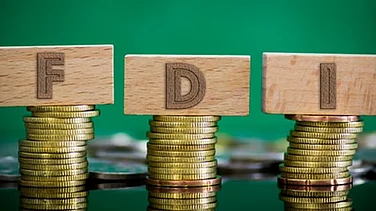As India cemented its Free Trade Agreement (FTA) with the United Kingdom (UK) last week, ending around three years of negotiations, recent trade manoeuvres by the United States (US)—with both the UK and China—warrant close attention in New Delhi. This is going to reshape already volatile global trade due to US President Donald Trump's "reciprocal" tariff threats.
In the case of India, the writing is on the wall: approach future deals, especially with the US, with eyes wide open.
Signs from the US-UK 'Mini Deal'
London inked a limited trade agreement with Washington on May 8, just after announcing its FTA with New Delhi on May 6. This limited or 'mini deal' could be a reflection of the Trump administration’s preferred model—narrow, transactional agreements that avoid the political complexities of full-fledged FTAs.
New Delhi-based trade policy think tank GTRI pointed out that while the UK has made sweeping tariff concessions, the US has offered far less in return.
Even as the deal has reduced or removed tariffs on some of the UK's exports, including cars, steel and aluminium, blanket 10% tariffs would still apply to most UK goods entering the US.
While Britain celebrated reduced US tariffs on key goods like steel, ethanol, and jet engines, the real gains flowed asymmetrically. The UK offered up significantly more—cutting tariffs on over 2,500 US products and greenlighting a $10bn Boeing aircraft order—while the US opened up less than 100 tariff lines in return, mostly with partial reductions.
This imbalance should ring a bell in India. A trade deal with the US has been long-sought from India. "If the UK–US deal sets the template, India can expect growing US pressure to finalise a “mini-deal” of its own, focused on tariff cuts and key strategic commitments rather than a full FTA that may come much later," Ajay Srivastava, founder at GTRI pointed out.
As a result, the pressure could mount to slash tariffs on sensitive agricultural items such as almonds, apples, ethanol and meat—concessions, devastating India’s small farmers.
"As with the UK, the U.S. is also expected to push India for large-scale commercial purchases. These could include Oil, LNG, military and civilian aircraft from Boeing, helicopters, or even nuclear reactors," the report noted. It also warned that pressure to ease foreign direct investment (FDI) rules, which currently limit the operations of multi-brand retailers like Amazon and Walmart and relaxing licensing restrictions on remanufactured goods, might also arise.
Hence, walking on the same tightrope could be detrimental for India and it should push for something more balanced approach instead.
US-China Trade Truce
Complicating the trade situation further, the US and China on Monday announced a trade truce of 90 days, reducing levies on most goods significantly including key sectors like steel and autos exempt. The US will temporarily lower its tariffs on Chinese goods from 145% to 30%, while China will cut its levies on American imports from 125% to 10%.
On paper, this truce reopens the $660bn trade corridor between the world’s two largest economies. But for countries like India, it also carries strategic downsides. Experts drew a silver line amid ongoing trade war escalations between China and the US, pushing for supply chain diversification beyond Beijing. But this relaxation may give hope to companies that have been looking to flee outside China for alternative hubs like Vietnam, Mexico and of course India. In fact, India's iPhone exports already accounted for over Rs 17,219 crore in April, registering a whopping 116% year-on-year growth.
If the world's two largest economies decide that after 90 days their tariffs would not be as high as now, then the companies might not be zealous for an alternative. "As the tariff gap narrows, companies that had shifted production to places like Vietnam, India, or Mexico may return to China," GTRI noted.
The “China Plus One” strategy, which India had been banking on, now stands at risk. And unlike China, which can weather such volatility with its massive production scale and political clout, India does not have the luxury of policy ambiguity.
And More...
At home, while India's agreement with the UK has allowed the country's nearly 99% of the exports to enter the British market duty-free, caution notes still remain.
A recent Canara Bank report has flagged a critical issue: rules of origin. Without strong local content requirements and value addition thresholds, there is a risk that Chinese goods could find backdoor entry into India or the UK via this FTA, undermining domestic industries.
Read Between the Lines
From the recent negotiations and agreement, it is quite understandable that even as the US wants smoother access but it does not look for parity. Additionally, recent statements from US leadership, such as Trump's claim of brokering a "ceasefire" between India and Pakistan by leveraging trade, underscore the strategic use of trade agreements in broader geopolitical contexts. It also further highlights how the US deals from a position of power.
As Commerce Minister Piyush Goyal emphasised earlier, the importance of "speed but not haste" in finalising agreements, New Delhi must keep following the same route and resist the temptation of quick wins. Full-scale FTAs are slow and complex, but they could offer balance and structure.





























